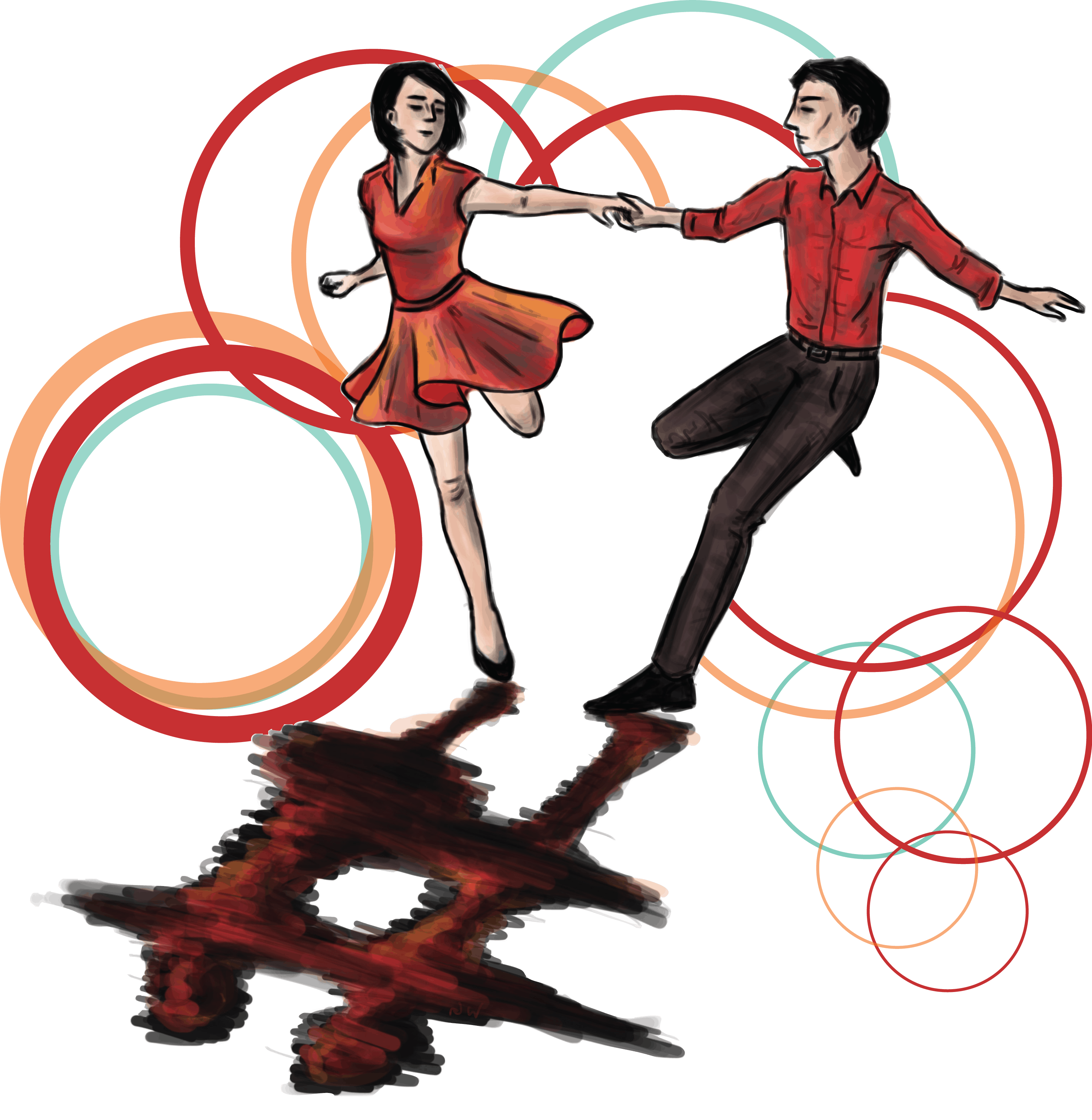Why do people dance? Some do it for the sake of art; others for ceremonial and traditional reasons. Most of us dance because it’s a good way to lose some of our inhibitions and just have a good time. But a lot of people dance because it’s simply one of the best ways of connecting and communicating with another person.
I probably wouldn’t have given that answer a few months ago, mostly because dancing was something that I didn’t really care much about. In fact, I generally considered dancing somewhat distasteful, and even a little crude. Of course, this opinion was based mostly on ignorance and inexperience. Social dancing — especially swing and blues — has completely changed my perspective.
Social dancing is essentially any partnered dancing with a leader and a follower. Ballroom dances such as the waltz, and the tango and jazz dances such as the Charleston or lindy hop are all types of social dancing. The leader often guides the dance, and the follower mirrors their actions. All social dance forms have a series of basic steps that must be known by the leader and the follower, which are then converted into moves that the dancers can embellish as much as they want. The success of these dances hinge on the ability of a pair to communicate with each other, which is often done through touch and subtle movements.
Partnered dancing was first treated as a high art form during the Renaissance (at least in Western culture). Noble courts took folk dance forms and formalized them — even adding codes of etiquette for each dance. Despite the formal attributes and high social status of such dances (which would continue into the nineteenth century), social dancing has still managed to remain relatively informal and naturalistic. Later dance genres like ragtime, blues, and swing jazz all have a freedom of expression and level of accessibility that ensures that they remain popular today.
In fact, it is these social dance forms that first evolved in black communities throughout the United States in the early twentieth century that best illustrate dancing’s power as a form of dialogue. Ragtime, blues, and jazz dances have cut across social, economic, religious, and even racial barriers. You continually switch partners during social dances, which means you get to meet a diverse group of people in a friendly atmosphere. The power of social dancing to completely disintegrate ideas of superior social status has often made it a catalyst for change. This is identified by Mark Knowles in his informative (and hilarious book) The Wicked Waltz and Other Scandalous Dances as one of the reasons why political and moral authorities have been so opposed to dancing throughout history. For example, the Charleston — which became a national fad in Canada and the United States in 1925 — was often criticized as crude, lewd, and even bad for your health. Naysayers worried about the kind of openness a dance like the Charleston was able to foster. As a big fan of the Charleston myself, I have to say its critics just didn’t know how to have a good time.
A good case in point for the power of social dancing can be found in my paternal grandparents, who met each other through social dance. My grandfather was a recent Scottish immigrant who came to Halifax after serving in the Royal Air Force in World War II. My grandmother was a Mik’maq who grew up on the Millbrook reserve outside Truro. My grandfather took elocution lessons after an embarrassing incident trying to order ice cream with his thick Scottish accent. My grandmother briefly called herself Mary Picton rather than her actual name of Marie Pictou, fearful of potential prejudice from the other nurses she worked with. But such worries or distinctions completely vanished when they met each other on the dance floor. They were just two young people out having a good time. I’d like to think they were on to something special.


